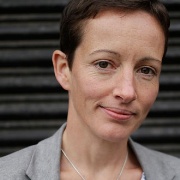
Profile Dr Anna Hiley
Age 40
Roles GP and chief executive of social enterprise Inclusion Healthcare CIC
Place of work Practices in Leicester and clinics and prisons around the city
Hours worked per week 45
6.00
I typically start the day by doing a five-mile run with my dog. I use the hour to plan for the day, anticipate what will come up in meetings and prepare to make key decisions. After working with Leicester’s primary care service for homeless patients, my team launched the social enterprise Inclusion Healthcare in September 2009 and am now chief executive. Our core business is delivering an APMS contract to treat Leicester’s 1,000 homeless patients across three clinics. However, offering care to homeless people is getting harder – many have moved from hostels to private lets dispersed all over the city – and homelessness is becoming an invisible problem.
8.30
I work three clinical sessions a week, but mornings are usually filled with meetings. Tuesday mornings are set aside for an update on Inclusion’s business developments, the financial position, feedback from the business units and any crucial staffing issues.
11.30
I grab a coffee before our clinical excellence meeting with the key members of our new substance misuse service. At the moment, one of the big challenges is trying to get test results – for example, for blood-borne viruses – and follow-up treatment more quickly. We’d like to set up a patient record that staff could access across the city, but this raises issues of data protection and confidentiality.
We also look at performance data. Our substance misuse contract is partly funded on a payment by results tariff (for instance, for programme completion) and we never rely on that funding until results have been achieved.
Once a month I also meet with my mentor. There is a huge difference between being a GP and a chief executive of a social enterprise. Leadership can be isolating. It has been a steep learning curve.
13.00
Today I will be chairing a case review meeting with a multidisciplinary team. There has never been proper training for GPs in substance misuse, and it overlaps with mental health, so these meetings are crucial so that GPs learn on the job.
Treatment workers, GPSIs and nurse prescribers can also benefit from advice and support during the meeting, and as clinical governance lead, I can oversee quality of care.
15.00
Next, I drive to the specialist criminal justice substance misuse clinic to work with service users in compulsory drug treatment. This includes anyone who the police or court have identified as having a substance misuse problem – for example, someone who has been caught shoplifting to fund their drug habit.
I enjoy doing assessments and review appointments with these patients and am constantly impressed by their resilience and capacity for change. Patient contact always reminds me why I am a GP.
18.30
Once or twice a week I cover an evening clinic for HMP Leicester’s integrated drug treatment service.
All new prisoners get a full assessment for drug and alcohol dependence followed by drug testing and prescribing for alcohol, benzodiazepine or opiate withdrawal symptoms. If they are dependent they will start to go into withdrawal within 24 hours, which is potentially life-threatening.
As a GP in prison, my conflict management skills have become very well developed. Being consistent and treating people with respect helps. It can be an advantage being a woman, because I can develop a different relationship with the male prisoners than a man could, and I feel less likely to get into threatening situations.
21.00
At home I catch up on emails and write another section of whatever report or board paper I’m working on, glass of wine in hand. Dealing with vulnerable groups such as we do can be difficult – the average life expectancy of a homeless person is still only in the mid-40s. But we do see people recover too – some even come back to be mentors to other patients with drug and alcohol problems.
Pulse October survey
Take our July 2025 survey to potentially win £1.000 worth of tokens













